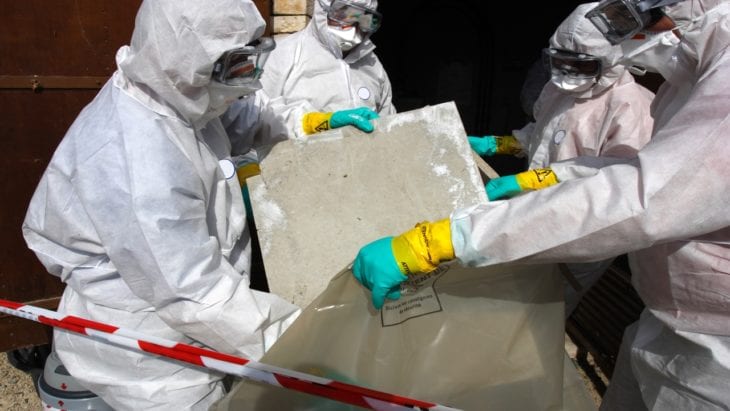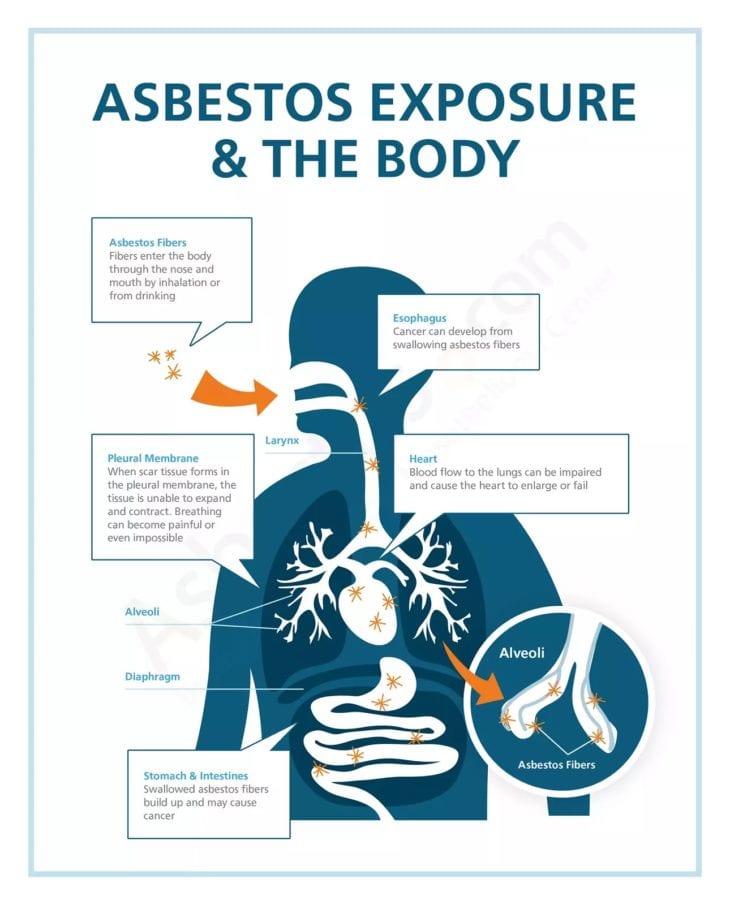There are six natural minerals that naturally occur in the environment which are fibers that can be separated for commercial and industrial use in household appliances. These minerals go by the name asbestos. Asbestos minerals are further separated into two groups, serpentine asbestos, and amphibole asbestos. The former include the mineral chrysotile, which has long and curly fibers that are mostly used in commercial appliances. While the former, amphibole asbestos, are considered the minerals actinolite, tremolite, anthophyllite, crocidolite, and amosite. Amphibole asbestos is characterized by straight fibers that take the shape of needles. These fibers are more brittle than serpentine asbestos and their ability to be fabricated is far more limited than the others.
What are the health risks of exposure to asbestos?
Since asbestos is used for many things, the health risks are always there. Asbestos is used in the construction industry for strengthening cement and plastic, insulation, roofing, floor tiles, fireproofing, sound absorption and many more. Apart from the construction industry, asbestos is used in many other industries such as the automotive industry, the shipbuilding industry, and more.

Img source: pixfeeds.com
Since asbestos is used for many things, people can get exposed to it in their workplace, in their home, in their communities, and more. Asbestos fibers can get distributed through the aid, and they could end up into our lungs. When in our lungs, they can cause scarring and inflammation which may lead to breathing difficulties or serious health problems.
The most common health risk that comes from asbestos exposure is mesothelioma. Mesothelioma is a form of cancer that is associated with the exposure of asbestos. When at Stage 4 Mesothelioma, your chances of survival are extremely slim and statistics show that as soon as you hit stage 4, you will have 12 months to live.
The dangers of asbestos exposure are evident but asbestos products are still on our shelves. Asbestos is classified by the U.S. Department of Health and Human Service as well as the U.S. Environmental Protection Agency as a carcinogen substance. The same classification goes for the International Agency for Research on Cancer. Asbestos is the clear culprit of mesothelioma. Mesothelioma is a form of cancer that occurs on the thing membranes that separates the chest and the abdomen. While there is sufficient evidence that mesothelioma is do indeed caused by asbestos, there is limited evidence that supports the theory that asbestos causes stomach, pharynx, or colorectum cancer.

Img source: take5andstayalive.com
But mesothelioma isn’t the only effect of asbestos exposure. Namely, exposure to asbestos can increase the risks of asbestosis. Asbestosis is an inflammatory condition that affects our lungs in which can cause shortness of breath, coughing, and even permanent lung damage. Other conditions that asbestosis is capable of is nonmalignant lung and pleural disorders, pleural plaques, pleural thickening, benign pleural effusions. There is not enough evidence that supports the theory that pleural diseases increase the risk of cancer; however, there are cases in which patients exposed to pleural diseases have developed lung cancer as a result of asbestos exposure.
How can you protect yourself from asbestos exposure?
It would seem that the people most exposed to asbestos are those working in maritime, construction, manufacturing, and service workplaces. There are clear regulations in place by the Occupational Safety and Health Administration (OSHA) which workers working in these industries need to follow so that they limit the exposure to asbestos.
